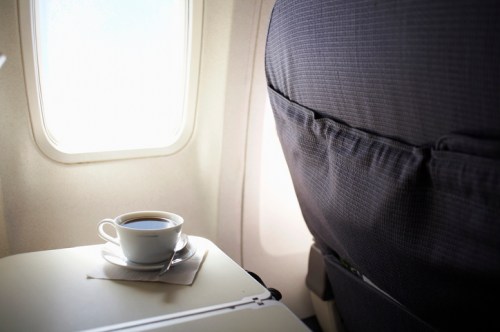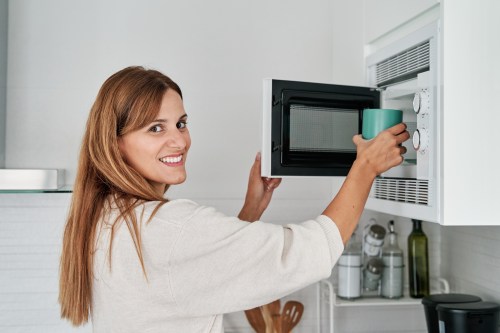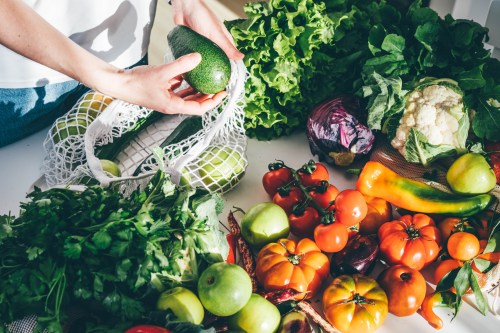‘I’m a Food Safety Expert—Here’s Why I Will Never Drink the Airplane Coffee’
Is drinking airplane coffee ‘bad’ for you? Charles Platkin, PhD, JD, MPH looks into how clean is airplane coffee and safety tips.

Whether you’re a regular caffeinator or want to perk up in the hopes of adjusting to a new time zone, you might opt for a cup or two of airplane coffee on your next flight. However, you may have heard rumors swirling around that some flight attendants—who are privy to a few insider secrets that airlines don’t want you to know—refuse to drink the hot water on airplanes due to concerns over hygiene and safety.
Experts in This Article
That said, how “bad” is it really to drink coffee in-flight… and should you avoid it at all costs?
How (un)clean is the water on airplanes used to brew coffee?
According to Charles Platkin, PhD, JD, MPH, Executive Director at Center for Food as Medicine and researcher behind a 2019 airplane water study, in-flight water quality hinges upon many variables—including if it’s a domestic or international airline. With the latter, things can be (pun alert) up in the air since regulations will vary from one country to the next.
He says that the key factors that will heavily influence how clean the airplane drinking water really is include:
- Where the tanks are filled
- How clean the tank and pipes/vehicles transporting the water to the plane are
- When the tank was cleaned last
- The specific airline and route at hand
For instance, a 2015 study in the International Journal of Environmental Research and Public Health found that long-haul flights were found to be “significantly poorer in terms of microbial quality” than short-haul flights. Moreover, the water service vehicle had a significant impact on the microbial load of the water on board the aircraft. At any rate, “Studies have shown there are trace elements—or sometimes significantly more—of bacteria, feces, and so forth,” Dr. Platkin says.
“Studies have shown there are trace elements—or sometimes significantly more—of bacteria, feces, and so forth,” Dr. Platkin says.
Per the Aircraft Drinking Water Rule (ADWR) implemented by the EPA in 2011, airlines are required to disinfect and clear out each aircraft’s water tank four times a year and test for coliform bacteria and potential E. coli contamination. (The ADWR also permits airlines to disinfect and clear out their tanks only once a year, so long as they test the water each month.)
Coliform bacteria is naturally present in the environment as well as fecal matter. As gross as it sounds, the coliform bacteria is unlikely to cause illness on its own. Instead, its presence in drinking water may indicate that pathogens including but not limited to E. coli may be present. Although the ADWR is in place to help ensure water’s potability, Dr. Platkin lacks faith in the systems as they currently stand. “These regulations have no bite,” he warns, noting that he’s yet to see evidence of penalties for airlines that don’t comply with the testing schedules or fail these routine checks.
TL;DR: The water used to brew your in-flight coffee is probably less potable than you’d hope it to be.
Is it unsafe to drink airplane coffee in-flight?
Based on his findings, Dr. Platkin gives a hard pass not only to airplane coffee, but also to the sink water in the cabin’s restroom. “I won’t even touch the water to wash my hands,” he shares, opting to use hand sanitizer or wipes instead. While this might be an extreme approach for most people, it’s his personal choice—and one that you don’t necessarily have to follow. He says that there’s a chance you could get a slight stomach ache from drinking contaminated coffee in-flight, with the caveat that this is based on anecdotal rather than hard evidence. (He also mentions that consuming caffeine at a higher elevation is likely to dehydrate you more quickly than if you were on the ground, so you’ll definitely want to take care to stay hydrated while flying.) “I worry more about flight attendants and the flight crew than the passengers,” he adds. After all, they have much more frequent exposure to and contact with potential contaminants than the occasional traveler would.
“I worry more about flight attendants and the flight crew than the passengers,” he adds. After all, they have much more frequent exposure to and contact with potential contaminants than the occasional traveler would.
At the end of the day—or rather, by the end of your flight—it’s up to you if you want to drink the brewed coffee. One cup is unlikely to trigger intense symptoms or side effects. Yet if you prefer to err on the side of caution, stick to bottled water and/or canned drinks to quench your thirst.
Fortunately, Dr. Platkin gives the green light to ice since it’s not usually made on board with the (potentially) sus water. Meals also get his go-ahead as they’re safe enough based on his years of research, so you don’t need to worry about limiting your in-flight bites.
Sign Up for Our Daily Newsletter
Get all the latest in wellness, trends, food, fitness, beauty, and more delivered right to your inbox.
Got it, you've been added to our email list.










